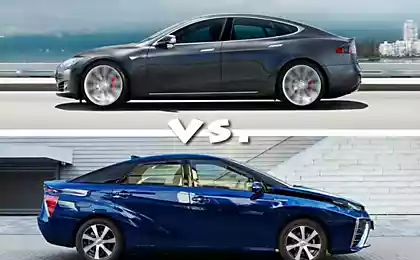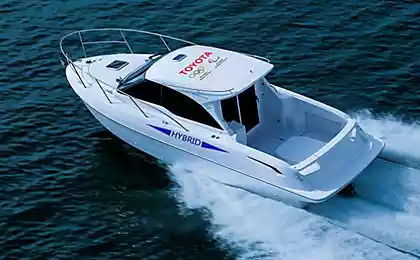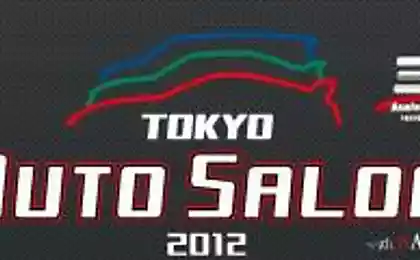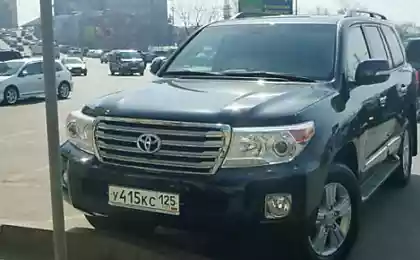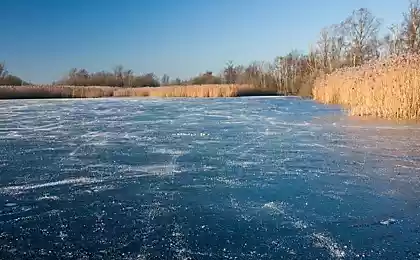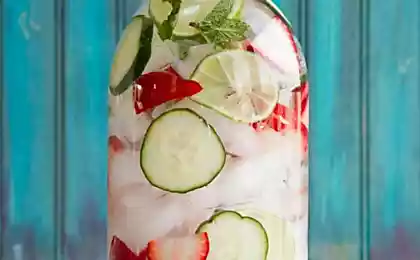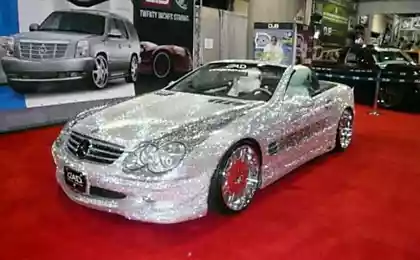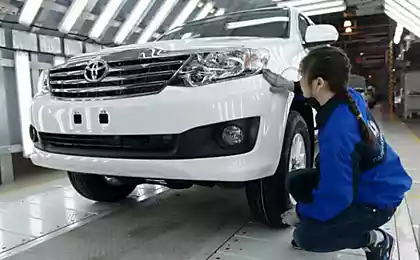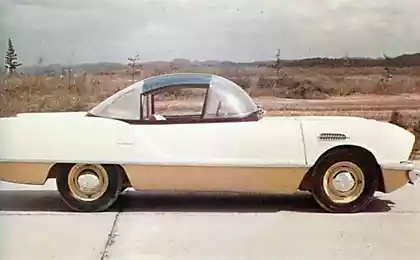957
How to get the Land Cruiser
Interesting photo report on how hard to pull ashore Toyota Land Cruiser. View on the scene. The car with a winch and the second for her as an anchor are about thirty meters from the shore in shallow water cruiser sunk at a depth of just over two meters, and somewhere in the 150 from shore:
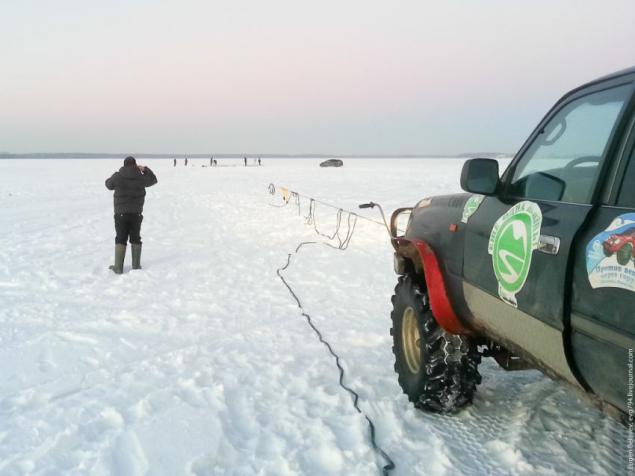
Preparatory work has been underway for a long time, drank and cleared polynya of the machine, be prepared to slug knocked together from planks and beams together. Winch rope thrown over the steel pipe and the muzzle of the machine already is elevated above the bottom.
At the time of drowning time to unwind the winch cable and lock that greatly simplify the task of extricating. And to put the car on the handbrake. (I do not know other details).
And the visibility of the road on the ice - it is not a road at all, it's three days ago quadrics with snegootvalom cleared the next track for racing small nedoprivodov:
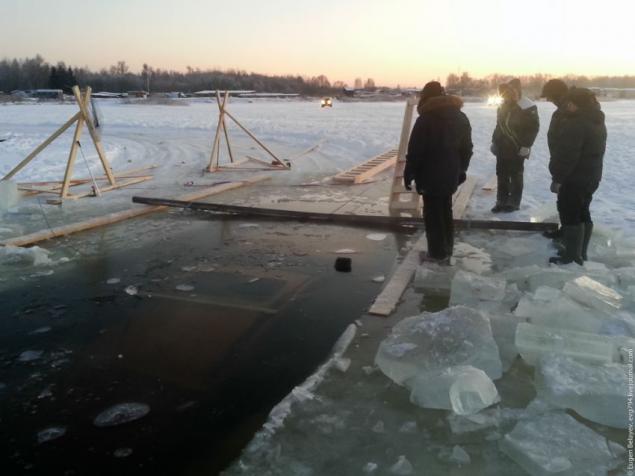
Lift the face, we start the wheels fell ill:
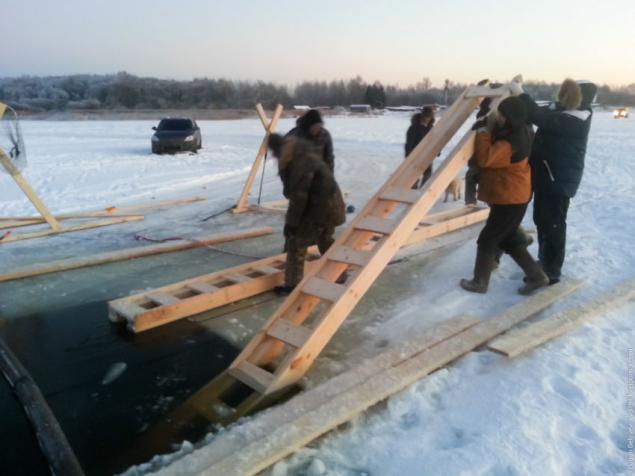
When we arrived on the scene, the street was -21. By nightfall already under -26. Yesterday, the ice was visibly thinner ...
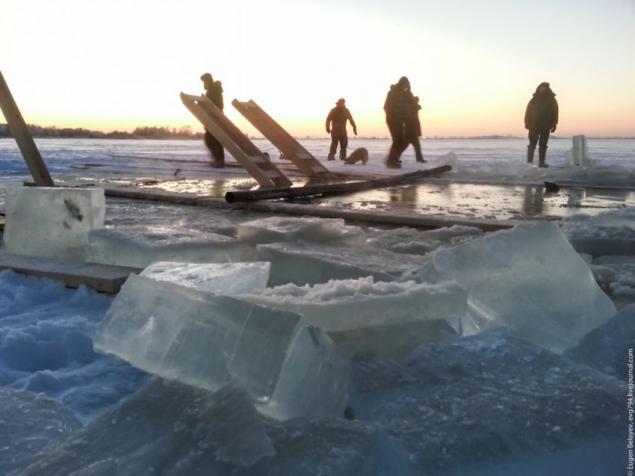
The front wheels have to slug Cruiser:

Start slowly pull winch, allowing the water to drain from time to lift the machine:

Night fell and the country 4h4tur work began)
And then the blocked wheel (car parking, right) breaks slug. Well, the best option - a timber 20 cm in diameter, but here it was in the shop. Bruce was all in knots, then we it even broke twice, with his hands:
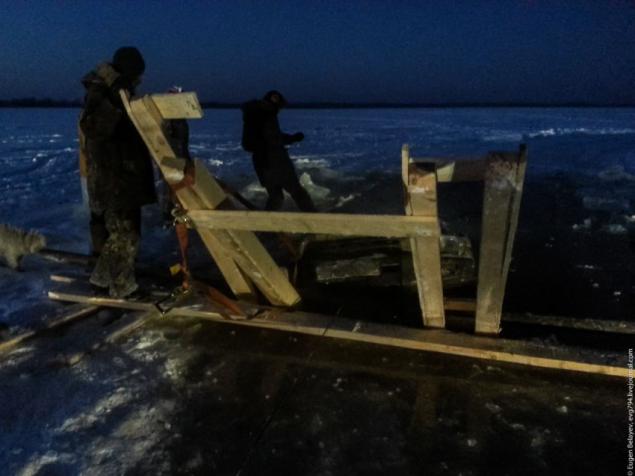
Comes in a large iron tripod:

Because of the broken car came down a little skewed, with wormwood, and had to expand ties with the help of manually align the machine. A bunch of extra time lost on this:
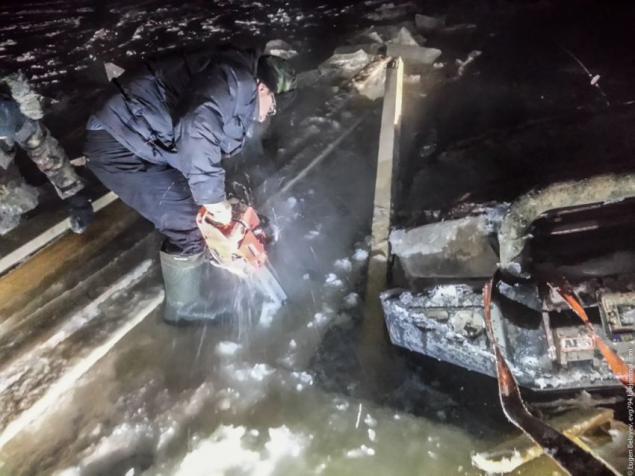
To help broken slug puts a metal tube, sawed the ice that a wheel had not rested on the edge of open water and slowly continue to lift the machine:
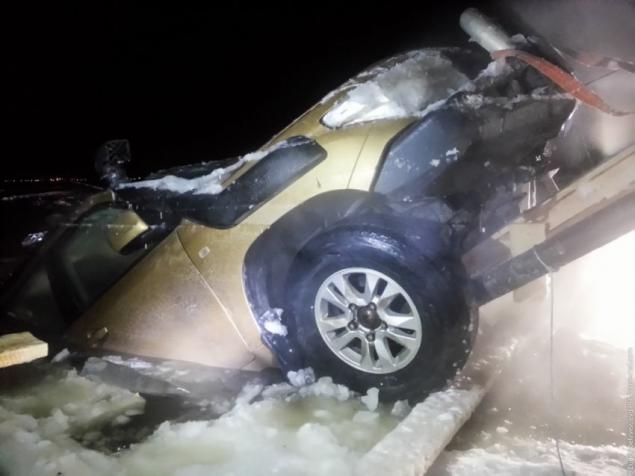
Releasing the driver to remove the parking brake:

And just as soon as the machine rolls easily on the ice:
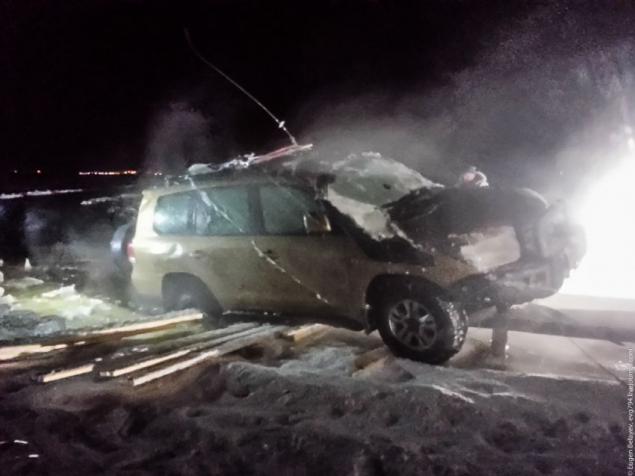
Hooray, the machine is raised. But the ice is cracking around significantly, it stands on top of the water. It is urgent to drag the car to the bank:
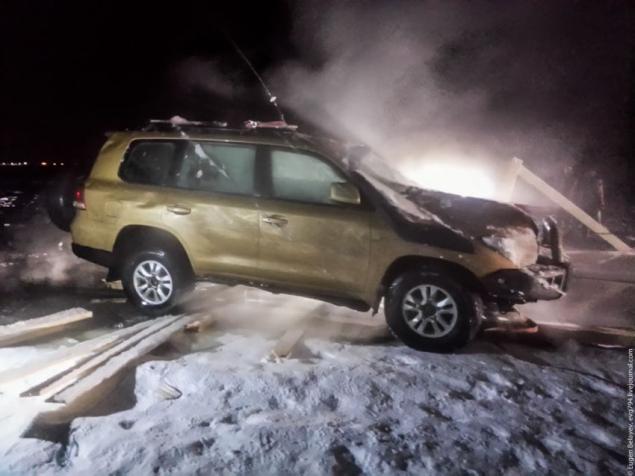
Night view from the shore:

The car got and sent to thaw. Many thanks to all to participate! :-)
So as not to repeat the mistakes of others:
Volodya employed driving instructor, so poduchit Skolsky driving on the road. Instructor led him there, there Rolled track. First we went to the Mitsubishi sports and everything was fine. But the goal was to learn from Kruzak, the result is known.
The ice thickness of 20 cm, a uniform transparent.
More Muscovites, ice track on the Moscow River near the M9 Krasnogorsk- Discovery drowned yesterday fetched.
Important clarification - in the place of the failure of (turn) was rubbed ice sports (very aggressive) Mizuho spiked to a thickness of 10-15 cm.
We had organizers in such places do wells to water captivated pits and compensate for wear. And best of all it was used to water the track with water, as is done on the ice crossings.
according to my measurements of the ice was fit - 20-25 cm.
many isotchnikah wrote:
5 cm - man
15 cm passenger car
25 cm SUV
the easiest and most affordable is the method proposed by M. Korunova:
P = h2 / 100,
where P - the maximum weight in tonnes, which can withstand the ice, h - ice thickness in inches, but not less than 20-25 cm.
--img15--
Source: evg794.livejournal.com

Preparatory work has been underway for a long time, drank and cleared polynya of the machine, be prepared to slug knocked together from planks and beams together. Winch rope thrown over the steel pipe and the muzzle of the machine already is elevated above the bottom.
At the time of drowning time to unwind the winch cable and lock that greatly simplify the task of extricating. And to put the car on the handbrake. (I do not know other details).
And the visibility of the road on the ice - it is not a road at all, it's three days ago quadrics with snegootvalom cleared the next track for racing small nedoprivodov:

Lift the face, we start the wheels fell ill:

When we arrived on the scene, the street was -21. By nightfall already under -26. Yesterday, the ice was visibly thinner ...

The front wheels have to slug Cruiser:

Start slowly pull winch, allowing the water to drain from time to lift the machine:

Night fell and the country 4h4tur work began)
And then the blocked wheel (car parking, right) breaks slug. Well, the best option - a timber 20 cm in diameter, but here it was in the shop. Bruce was all in knots, then we it even broke twice, with his hands:

Comes in a large iron tripod:

Because of the broken car came down a little skewed, with wormwood, and had to expand ties with the help of manually align the machine. A bunch of extra time lost on this:

To help broken slug puts a metal tube, sawed the ice that a wheel had not rested on the edge of open water and slowly continue to lift the machine:

Releasing the driver to remove the parking brake:

And just as soon as the machine rolls easily on the ice:

Hooray, the machine is raised. But the ice is cracking around significantly, it stands on top of the water. It is urgent to drag the car to the bank:

Night view from the shore:

The car got and sent to thaw. Many thanks to all to participate! :-)
So as not to repeat the mistakes of others:
Volodya employed driving instructor, so poduchit Skolsky driving on the road. Instructor led him there, there Rolled track. First we went to the Mitsubishi sports and everything was fine. But the goal was to learn from Kruzak, the result is known.
The ice thickness of 20 cm, a uniform transparent.
More Muscovites, ice track on the Moscow River near the M9 Krasnogorsk- Discovery drowned yesterday fetched.
Important clarification - in the place of the failure of (turn) was rubbed ice sports (very aggressive) Mizuho spiked to a thickness of 10-15 cm.
We had organizers in such places do wells to water captivated pits and compensate for wear. And best of all it was used to water the track with water, as is done on the ice crossings.
according to my measurements of the ice was fit - 20-25 cm.
many isotchnikah wrote:
5 cm - man
15 cm passenger car
25 cm SUV
the easiest and most affordable is the method proposed by M. Korunova:
P = h2 / 100,
where P - the maximum weight in tonnes, which can withstand the ice, h - ice thickness in inches, but not less than 20-25 cm.
--img15--
Source: evg794.livejournal.com
